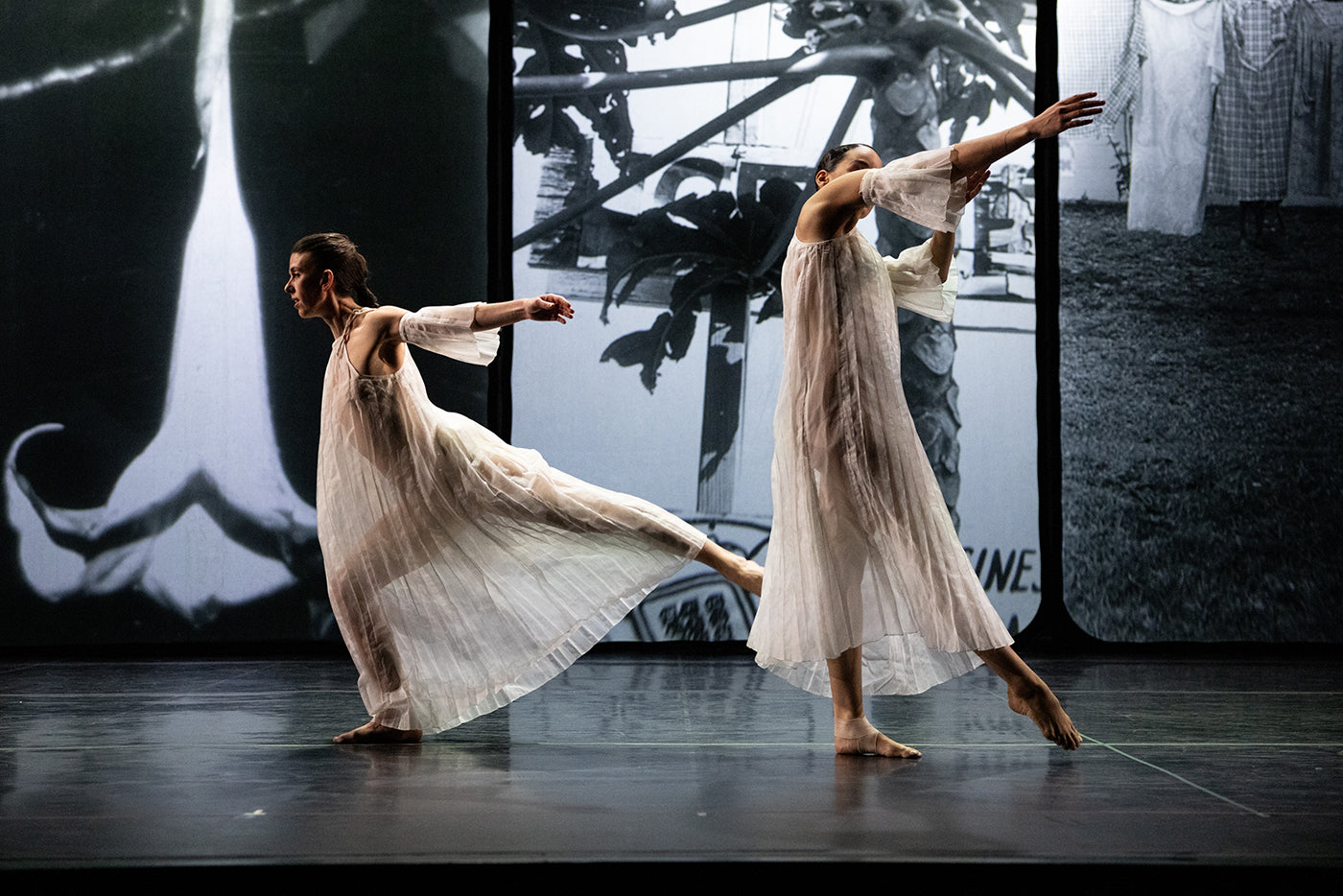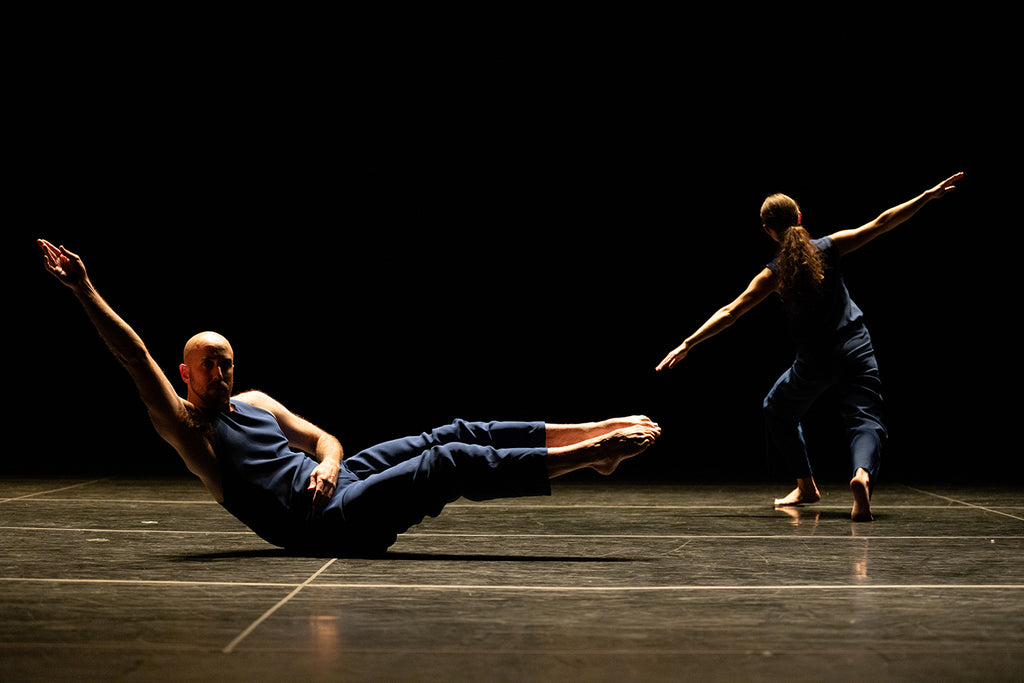“Working Title” is all about accumulation and reduction as dancers move in and out of the ensemble. At times a dancer seems to change directions mid-phrase, her body setting out toward the right, while her torso shifts to face left. Throughout, the mood is lighthearted, enhanced by the original recorded musical montage that features percussion, accordion, cello, voice, marimba, and tabla. The piece is clever, playful, and athletic—challenging for the dancers and also perhaps the audience. Like a clock, “Working Title” continues to move regardless of a viewer’s capacity.
Each dancer has a solo turn where their individual nuance and energy is spotlighted. It brought to mind that, as critic Deborah Jowitt has pointed out, Brown never intended for her dancers to move exactly the way she herself did. More interesting was their interpretation—or as author Susan Rosenberg, puts it, “imperfect fidelity”—freedom to be themselves on stage. Similar to the way Soulier’s commissioned piece serves to extend Brown’s legacy into a future without her, so does this new generation of dancers who have the physical adroitness to perform in the manner of Brown without being replicas of her.
A duet between Catherine Kirk and Burr Johnson is magical. Kirk performs a solo while two others lie face down on the floor, then suddenly hiccup awake. Cecily Campbell bounds across the stage like a rubberband, then stops on a dime to a blast of toots from the trombone. “Working Title” ends mid-musical phrase, the dancers lined up hopping with their arms forming a cactus shape. A program note quotes Brown as saying: “[The work] went on to be a resource for years . . . broken patterns, making a traveling phrase… It’s an example of something I went on to explore later. It became a subject for me.” Here, 39 years later, it’s as if the company is saying, Brown’s influence can and will go on.









comments